If you want to start sculpting, you will face the problem of which clay to use for your sculpt. And you probably asked yourself: Which polymer clay should I choose as a beginner to sculpting? The varieties of clay can be a bit overwhelming, let’s take a closer look at them and talk about some pros and cons.
Throughout the article you will see photographs and mentions of brands. I’m not sponsored, these are my personal recommendations or brands that I currently use.
First, I sculpt figures with Polymer Clay. This kind of clay will harden up in an oven when baked (often at around 130° Celsius). Polymer clay has the advantage that you can theoretically work on it for an infinite time, since it won’t dry by air. Theoretically because old clay will get crumbly (several years old clay) with time.
Some clays get a different texture if they are put aside for a long time. They need to be “conditioned” (kneaded) to return them to their soft state. This is can be a problem if the figure is half sculpted and needs refining.
Air drying clay is usually a bit cheaper than polymer clay. But if you’re working on a project for several weeks, it’s a difficult task to keep it moist for sculpting. It can dry up or get too wet and starts to deform, or worse, starts to mold.
You will face the same problem with ceramic clay. Ceramic clay can also dry by air. Also: you will have to bake/burn it with much higher temperatures (around 2000°Celsius). So you can’t do that at home, but need to find a service to do so for you.
There is a big variety of Polymer Clay, and I haven’t tried them all – I will refer to those I have worked with.
The answer is as difficult as it is easy: everyone will have preferences. From my experience that can be different from person to person. I have watched a lot “sculpting for beginners” videos before I started sculpting. People tell “not to use clay XYZ”, when to the next video tells you “to use clay XYZ”.
Fret not: I’m not leaving you in the dark of my personal opinion.
I think, from my experience, that a firmer clay is easier to use for beginners. Most people who have searched for polymer clay will have stumbled over the brand name “Super Sculpey”. This is an established clay by the brand “Sculpey”. Sculpey themselves has a variety of sub brands, but “Super Sculpey” is their “Pro” clay.
Super Sculpey comes in a few kinds, and among them “Firm”. Super Sculpey Firm is my personal go-to clay for basic figures.
Another clay around this firmness is Fimo. Fimo is mostly known for its colorful variants and isn’t really considered a “professional clay” (at least in Germany, where I live). But they do have a “pro” product line, which is essentially selling black, white and gray clay in larger badges.
I’m not a big fan of Fimo, because I prefer Super Sculpeys texture, but as I said in the start, this is preference. Also, in Germany, Fimo is easier to come by as Super Sculpey, as it is usually in stock in every craft store.
The equivalent of sculpey to Fimo is Sculpey Premo. This is a reasonably firm clay as well, and in my eyes suited well for beginners.

Here in Germany, it’s rare to find Super Sculpey firm in a store. I’m ordering mine at modellierbu.de. You can find a vide variety of clay brands in their shop.
Now that I’ve put some brand names down, let me tell you why I think that firmer clay is better for beginners:
As I said there are a lot of other brands or sub brands of clay (let alone Sculpey has a big product variety). I only worked with a small portion of them – here’s my experiences. I’m going to add to them as time goes on and I try different brands.
Super sculpey beige is a softer variant of Super sculpey. Compared to the gray version it’s a lot more smooshy and soft. This gave me a bit of trouble keeping already sculpted parts in shape and not to destroy them by touching them. If you’re not experienced, you might have to bake the figure more times in between the sculpting process. That makes sculpting individual parts easier.
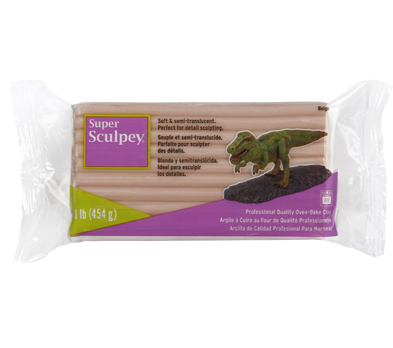
Cosclay is a relatively new clay that has some interesting attributes: if baked correctly, it stays flexible. That means you can bend it without breaking which makes shipping figures a lot easier.
There are four sub brands that are similar clay, three of them feature different colors and different density (soft, medium firm, doll). Their touch is very soft and in my opinion great for details. It is, however, hard to work with on a whole sculpture if you’re a beginner. I use it for stick-out-details that run in danger of breaking, or to sculpt small details.
The one that stands out to me is Cosclay Extra-firm. It has around the firmness of sculpey firm, a very nice and not oily touch, and close to now memory when blending, so you can easily blend parts seamlessly. This is a new version of their first kickstarter clay, that has definitely improved.
Top: Kickstarter Version of Cosclay
Bottom: Retail Version of Cosclay

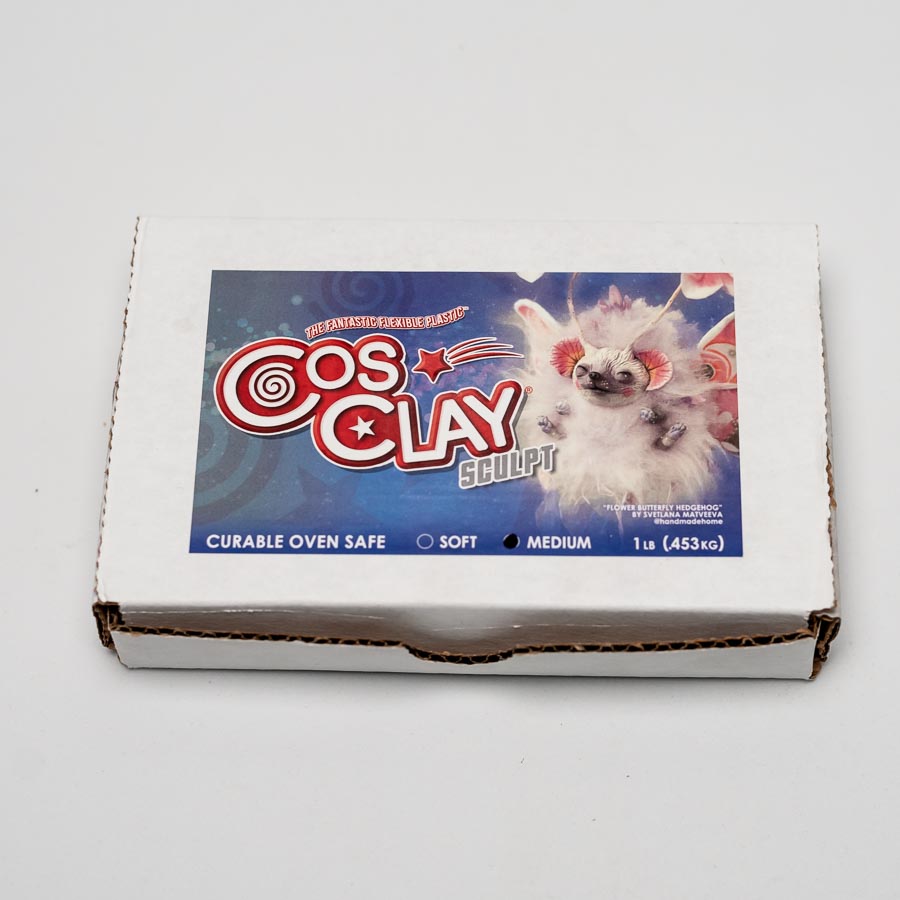
Cernit is a rather overlooked clay in the face of Cosclay nowadays – the “base” clay, “Cernit One” is similar to it in attributes. It is a bit softer than Cosclay Kickstarter. On the other hand, it’s a bit firmer than Super Sculpey Firm. It feels similar in touch, and it stays flexible after baking. When I tested in on a sheet of about 1 mm strength, I could almost fold it, with just a few stretchmarks.
There is a translucent version of Cernit that is easily to dye with alcohol based ink. It gets milky white after baking and stays very flexible as well. However, when it’s conditioned, it can take on a texture that feels almost like bubble gum. Or kneadable erasers. So it is hard to sculpt with it.
I’m sorry the packaging is so wrecked! I’m going to take a new picture when I order new Cernit.
Top: Cernit One
Bottom: Cernit Translucent
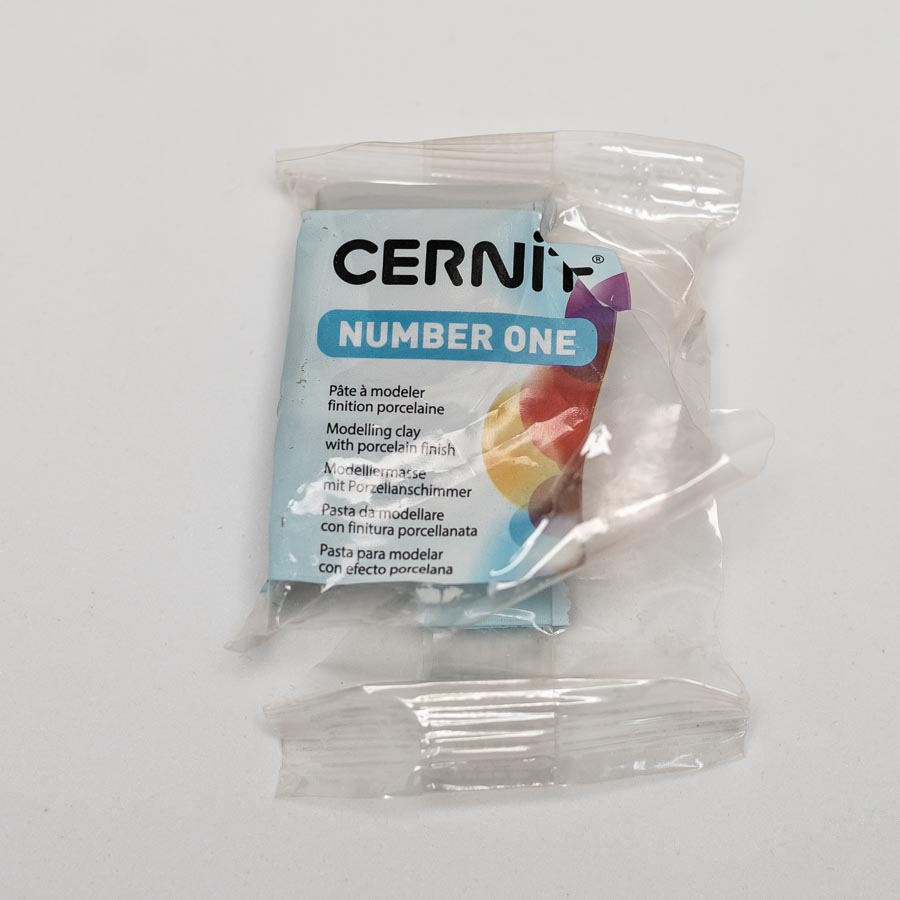

Bees putty is a clay that is made to behave like beeswax. That makes it stick better to already baked clay and armatures (wire skeleton cores of sculpts). It is a bit sticky. I use it to help my Sculpey stick to armatures and for small pieces with armature like Hands. Bees Putty is also less rigid than sculpey and breaks less easily. One thing to keep in mind is that it gets a waxy surface and needs to be treated with solvent (like Acetone) before painting.
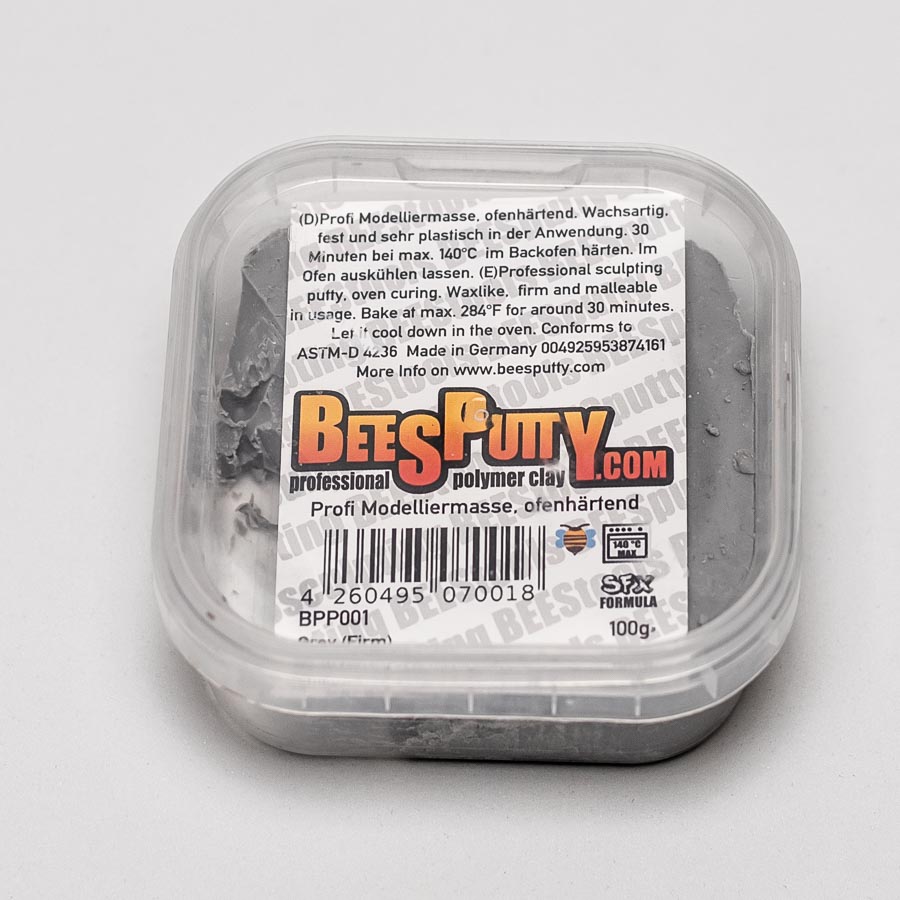
Fimo is easy to come by in my country, thus it’s the first polymer clay that people in general work with. Shops sell “Fimo Soft” most of the time, which is not comparable in softness with, for example, medium firm Cosclay. It is still rather firm. The “normal” Fimo is firmer and needs a lot of conditioning, similar to Cernit. In my experience the texture is different from Super Sculpey firm, it has less grain. That doesn’t mean Super Sculpey Firm has a lot of grain, Fimo just feels more “slippery” to me.
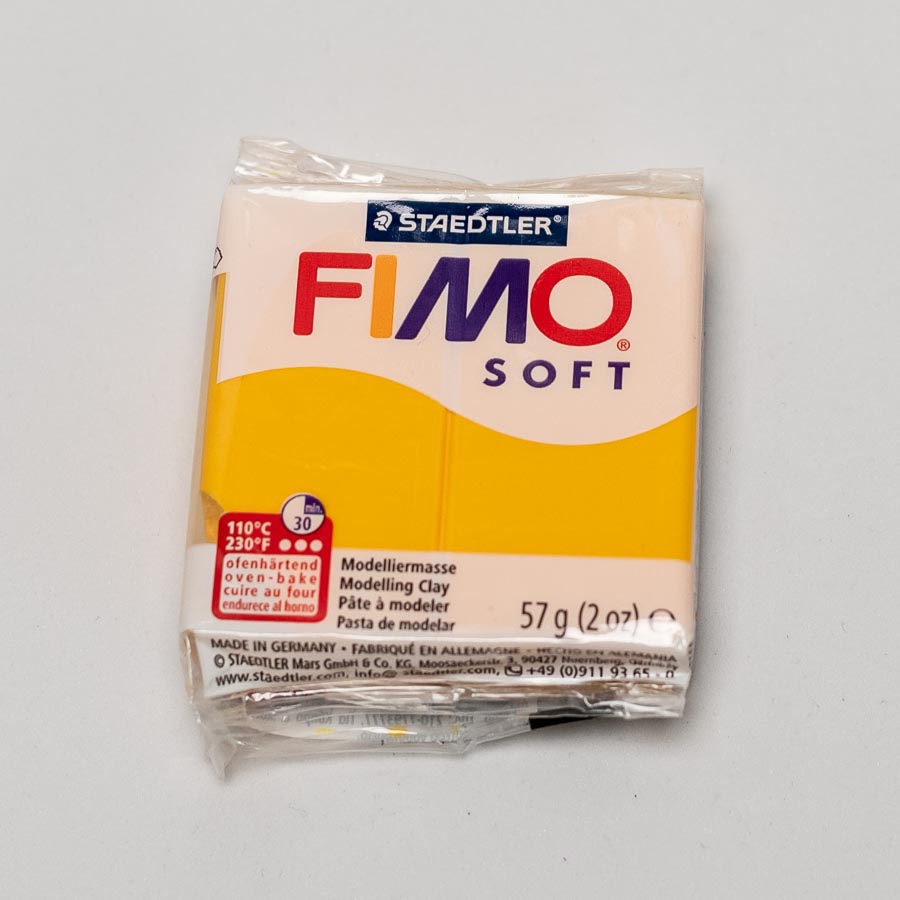
Papa’s clay is yet another clay I have tried, and it feels similar to Super Sculpey Firm. The firmness and touch is very similar, though it took me longer time to condition it. It was originally way more crumbly, but that can be because it was an older badge. Unfortunately it didn’t have a date on it. Otherwise, I’d say it’s exchangeable with Super Sculpey firm.
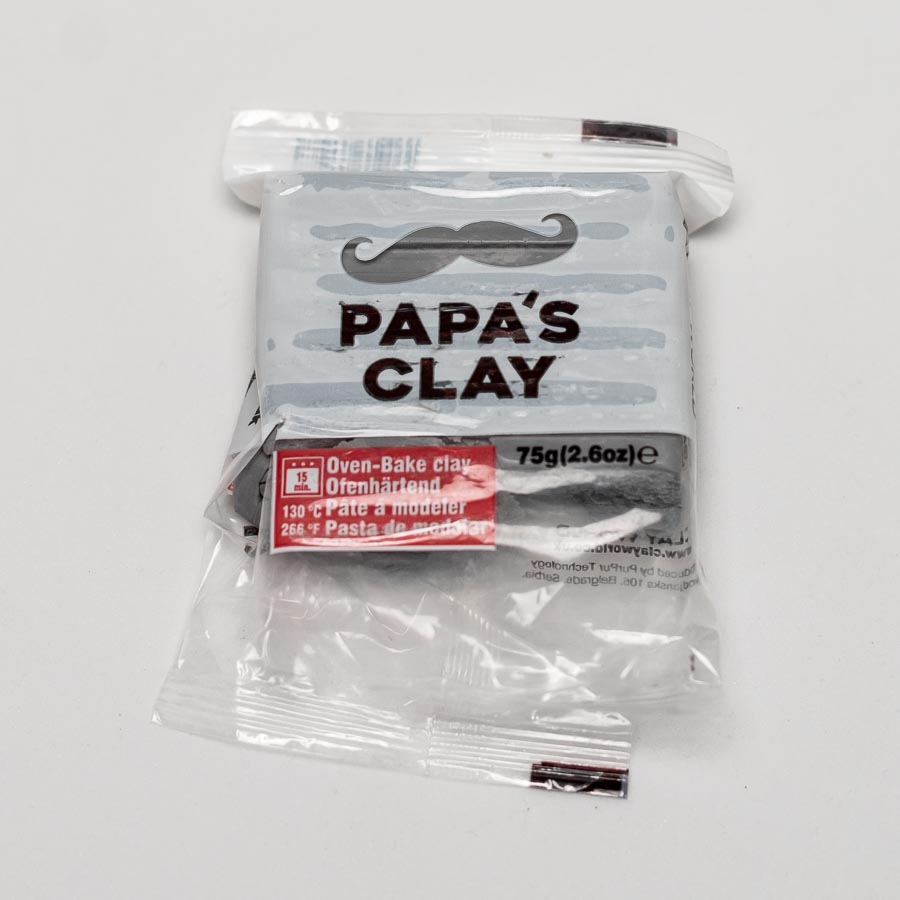
The world of clay is big, and it’s interesting to venture out there and try all the clays! I think that using a firmer clay like Super Sculpey Firm as a base for your figure is great. But other clays can be nice additions for certain fields of use.
I use a mix of Super Sculpey, Bees Putty, Cosclay and Cernit, depending on what I do:
I hope I could give you some ideas about the question: Which polymer clay should I choose as a beginner to sculpting ! Once you got into the topic, there will be products that interest you more than others. Go and try them!
You are looking for more guides?
Here is my Tools and Material guide.
Don’t know what project to tackle first?
Here’s my advice on a good starter project!